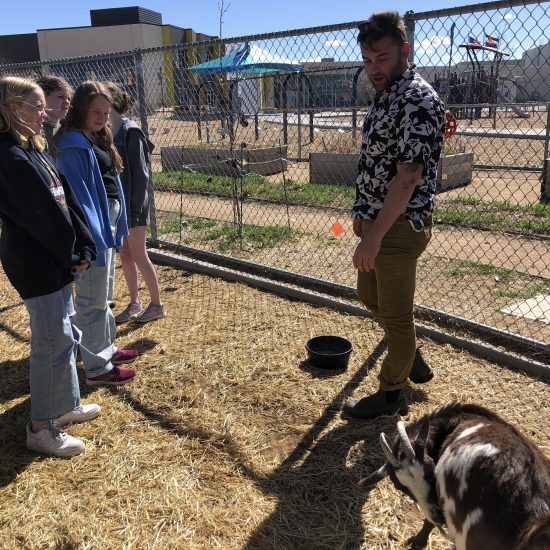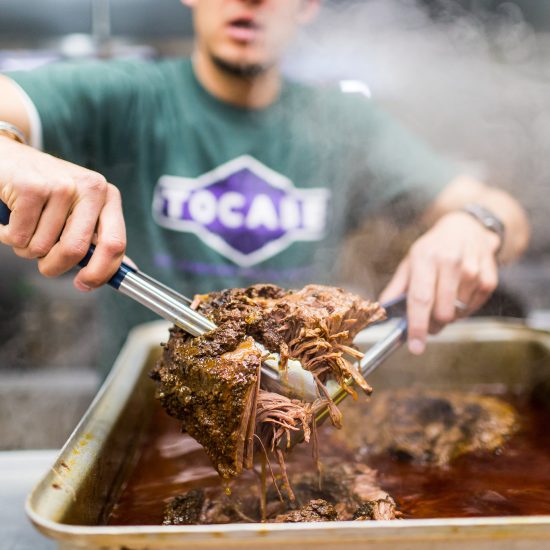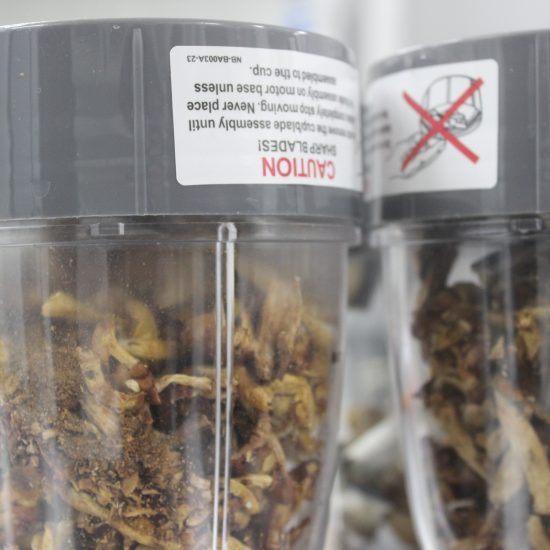
With food insecurity on the rise in Denver, the harvest provides hope in the community. According to Hunger Free Colorado one in three Coloradans lack reliable access to nutritious food and 16% of children and 20% of adults don’t get adequate nutrition because of financial constraints. Some schools are taking matters into their own hands with farms that connect students to the land and their communities.
Whether it’s the tranquil water flow of the hydroponic gardens at Bruce Randolph School or the clucking of chickens right outside the classroom on Denver Jewish Day School’s farmette, educational facilities are changing the traditional learning experience for their students by teaching the value of growing and harvesting and providing accessibility to fresh and affordable produce for their community. Sarah Peterson, the Assistant Principal at Bruce Randolph School, says students are taking the lead.
“Now students are the ones taking food to the cafeteria. They’ve wrapped their heads around how that process works. But we’re working on partnering with the community, students, and families to think about what they want to see happen with the food. This year, one of our goals is to make that a student driven process.”
Sarah and Abigail Belson, farm educator at Bruce Randolph, are side by side with their students on this learning journey.
“Having students getting in the habit again of wondering and asking questions and figuring out how they can be an impact to their community, how this farm can be impacting, the curiosity is blossoming from and because of the garden,” says Peterson.
Belson adds, “here they’re getting that immediate impact of what they’re doing. I think that’s just so important for kids to be able to have and just really feel that even though they’re in high school or middle school, they can do something meaningful.”


Thanks to funding from Denver Public Schools and grants, a hydroponic garden with towers of lettuce, basil, bokchoy and cilantro is growing at Bruce Randolph. Peterson says students are able to apply a curriculum that they would typically learn in a lecture class to a real life situation.
“I think the farm offers a really nice hands-on experience where we know that in the real world science does not happen from a textbook sitting down independently. It happens collectively with lots of people, it’s very hands-on.”
At Denver Jewish Day School, manager and farm educator, Alix Kivlin, believes that combining expression and curriculum is essential as the foundation of learning.
“Having the middle schoolers come out and put seeds into the beds and make garden signs in Hebrew and English and utilize that as a Hebrew lesson. You know, bringing traditional curriculum out to the garden.”
Tasks for the students range from tending to the chickens and gathering eggs, to seeding the beds in the garden for some fresh arugula and jalapenos. Kivlin sees this process as a cycle, students expand the knowledge they get in the classroom into a skill where curriculum is applicable.


“I think it is essential to know where your food comes from. How it grows, how it can die, how you have to care for it, and then how you prepare it. A full cycle and how that is nourishment for both yourself, your classmates, the school, the community, It’s like an onion with all these layers that expand.”.
Kivlin continues to expand these layers, even as the season of harvest for Denver Jewish Day School comes to an end.
“Some of our food gets donated to Jewish Family Services. They have a food bank and no cost grocery program a mile away from here. So we do some donations to them.. We’ve actually given more food into our own cafeteria. So it’s going back into our school cafeteria and in school lunches.”
These solutions are sprouted by students, where the garden is the classroom, where you will often find the children of Denver Jewish Day School preparing jars of salsa they made for the evening to sell to families. Or perhaps the packing of soil to begin a fresh harvest of cucumbers by students of Bruce Randolph to prepare a hearty salad.

“I think that is entirely up to our students,” says Peterson. I think that the better that we get at this as adults, the more we give students ownership to determine what they want to do for their community and how to do it. And so I think that they have the answers to those questions, because it is their community too. And we want them to have that ownership over how they’re impacting it.”
A connection between the educational leaders of these facilities, their students, and the community has bloomed. Students come in and out asking if there are tasks to be done. Over at Bruce Randolph, students walk over to Peterson and Belson asking if the seed had been planted correctly and what is next on the agenda. Kivlin, at Denver Jewish Day School, expresses the necessity and impact of the curriculum.
”Learn where your food comes from,” says Kivlin. “And it will literally start the path from there. Like that’s how it begins, I would say and see how you can use that as an education tool, very casually, for your own children, friends, family, parents, grandparents, you know, it’s something that spreads.”






